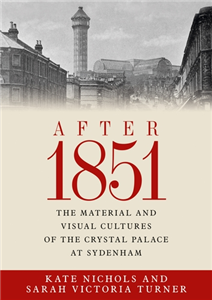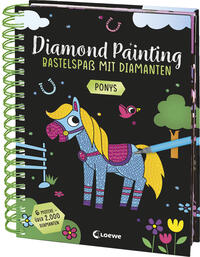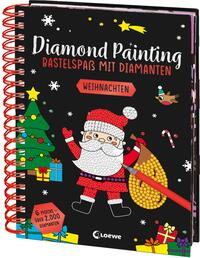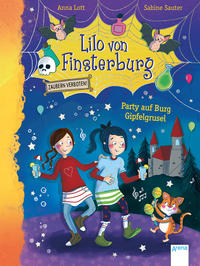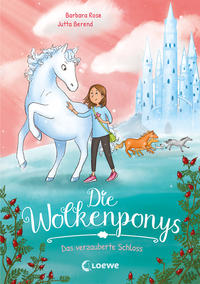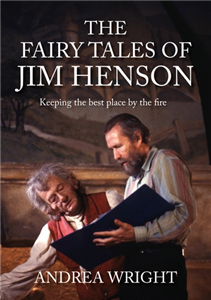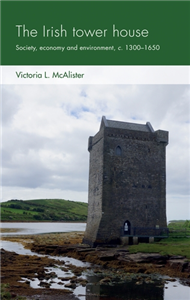Your Search Results
-
Palazzo Editions Ltd.
We are a young and flourishing independent publishing company based in Barnes, London. We create beautifully designed and illustrated books for the UK and international markets in the areas of popular culture, music, film, art, design and architecture, history and biography, and children's books.
View Rights Portal
-
Promoted ContentHumanities & Social SciencesMarch 2017
Exhibiting the Empire
Cultures of display and the British Empire
by John McAleer, John M. MacKenzie
Exhibiting the empire considers how a whole range of cultural products - from paintings, prints, photographs, panoramas and 'popular' texts to ephemera, newspapers and the press, theatre and music, exhibitions, institutions and architecture - were used to record, celebrate and question the development of the British Empire. It represents a significant and original contribution to our understanding of the relationship between culture and empire. Written by leading scholars from a range of disciplinary backgrounds, individual chapters bring fresh perspectives to the interpretation of media, material culture and display, and their interaction with history. Taken together, this collection suggests that the history of empire needs to be, in part at least, a history of display and of reception. This book will be essential reading for scholars and students interested in British history, the history of empire, art history and the history of museums and collecting.
-
Promoted ContentHistory of Art / Art & Design StylesFebruary 2017
After 1851
The material and visual cultures of the Crystal Palace at Sydenham
by Edited by Kate Nichols, Sarah Victoria Turner
Echoing Joseph Paxton's question at the close of the Great Exhibition, 'What is to become of the Crystal Palace?', this interdisciplinary essay collection argues that there is considerable potential in studying this unique architectural and art-historical document after 1851, when it was rebuilt in the South London suburb of Sydenham. It brings together research on objects, materials and subjects as diverse as those represented under the glass roof of the Sydenham Palace itself; from the Venus de Milo to Sheffield steel, souvenir 'peep eggs' to war memorials, portrait busts to imperial pageants, tropical plants to cartoons made by artists on the spot, copies of paintings from ancient caves in India to 1950s film. Essays do not simply catalogue and collect this eclectic congregation, but provide new ways for assessing the significance of the Sydenham Crystal Palace for both nineteenth- and twentieth-century studies. The volume will be of particular interest to researchers and students of British cultural history, museum studies, and art history.
-
 Trusted Partner
Literature: history & criticismSeptember 2001
Trusted Partner
Literature: history & criticismSeptember 2001The Great Exhibition of 1851
by Susan Williams
The Great Exhibition of 1851 has become a touchstone for the nineteenth century. The Crystal Palace produced a commodity world, an imperial spectacle, a picture of capitalism, a liberal dream, a vision of modern life. Historians have saturated the Great Exhibition with meanings. This collection of essays exposes how meaning has been produced around the Great Exhibition. It contains a series of critical readings of the official and popular historical record of the Exhibition. Critics and historians of art, culture, design and literature have been brought together to examine the objects, the images, the documents and the fictions of 1851. Their essays explore the determined use of industrial knowledge, the contested definitions of nation and colony, and the actual control of the space of the Crystal Palace after the Great Exhibition closed. The Great Exhibition of 1851 presents new interpretations of one of the most significant exhibitions in the nineteenth century and will be essential reading for anyone studying cultural history, design history, art history and literature.
-
 Trusted Partner
January 2024
Trusted Partner
January 2024Diamond Painting - Bastelspaß mit Diamanten - Ponys
Crystal Art mit 6 Motiven und über 2.000 Diamanten - Gestalte Bilder nach dem Malen-Nach-Zahlen-Prinzip - Ab 8 Jahren
by Anna Lena Grünhäuser
FUNKELNDER BASTELSPASS Motiv auswählen, mit Diamanten verzieren und entspannen! Durch das Aufkleben der Steinchen nach dem bewährten Malen-nach-Zahlen-Prinzip kommen schrittweise verspielte Ponys zum Vorschein. Das macht richtig gute Laune und die fertigen Werke sehen nicht nur im Kinderzimmer gut aus, sondern sind auch ein funkelschönes Geschenk. Alle benötigten Materialien sind in den Büchern enthalten.
-
 Trusted Partner
September 2024
Trusted Partner
September 2024Diamond Painting - Bastelspaß mit Diamanten - Weihnachten
Crystal Art mit 6 Motiven und über 2.000 Diamanten - Gestalte Bilder nach dem Malen-Nach-Zahlen-Prinzip - Ab 8 Jahren
by Anna Lena Grünhäuser
Glitzer, Funkel, Bastelspaß! Verziere vorwitzige Weihnachtselfen, verschmuste Rentiere und festliche Weihnachtsbäume mit glitzernden Diamanten und lass dich überraschen, wie toll deine Kunstwerke funkeln! Enthalten sind 6 Motive, über 2.000 Diamanten und ein Applikator-Stift. Der Trend Diamond Painting endlich als Buch! Kreative Beschäftigung für Kinder ab 8 Jahren Funktioniert nach dem bewährten Malen nach Zahlen-Prinzip Mit 6 Motiven, über 2.000 Diamanten, Behältnis und Stift zum Aufkleben der Steinchen und Anleitung Zusätzlich 19 Ausmalbilder Fördert die Feinmotorik Entspannt und beruhigt Tolles Mitbringsel für die Adventszeit
-
 Trusted Partner
The ArtsJune 2021
Trusted Partner
The ArtsJune 2021Contemporary French cinema
An introduction (revised edition)
by Guy Austin
Contemporary French cinema is an essential introduction to popular French film of the last 35 years. It charts recent developments in all genres of French cinema with analyses of over 120 movies, from Les Valseuses to Caché. Reflecting the diversity of French film production since the New Wave, this clear and perceptive study includes chapters on the heritage film, the thriller and the war movie, alongside the 'cinéma du look', representations of sexuality, comedies, the work of women film makers and le jeune cinéma. Each chapter introduces the public reception and critical debates surrounding a given genre, interwoven with detailed accounts of relevant films. Confirmed as a major contribution to both Film Studies and French Studies, this book is a fascinating volume for students and fans of French film alike.
-
 Trusted Partner
The ArtsJanuary 2019
Trusted Partner
The ArtsJanuary 2019Contemporary French cinema
An introduction (revised edition)
by Guy Austin
Contemporary French cinema is an essential introduction to popular French film of the last 35 years. It charts recent developments in all genres of French cinema with analyses of over 120 movies, from Les Valseuses to Caché. Reflecting the diversity of French film production since the New Wave, this clear and perceptive study includes chapters on the heritage film, the thriller and the war movie, alongside the 'cinéma du look', representations of sexuality, comedies, the work of women film makers and le jeune cinéma. Each chapter introduces the public reception and critical debates surrounding a given genre, interwoven with detailed accounts of relevant films. Confirmed as a major contribution to both Film Studies and French Studies, this book is a fascinating volume for students and fans of French film alike.
-
 Trusted Partner
Children's & YA
Trusted Partner
Children's & YALilo of Dark Castle. No Magic Allowed! (3). Party at Highhorror Castle
by Anna Lott/ Sabine Sauter
The Dark Castle family receives an invitation to a party at Highhorror Castle. Lilo and Miss Rüdiger are immediately eager to go. And of course Luisa should go with them. But humans are strictly forbidden to set foot in Castle Highhorror. “Who cares?”, say Lilo and Luisa, and at first everything seems fine: Luisa gets in as a perfect witch. But then the girls learn about a protective magic spell which covers the whole of the castle: unauthorized beings will be turned for ever into stone… Only a secret book of magic spells can save Luisa now!
-
 Trusted Partner
Children's & YAJuly 2022
Trusted Partner
Children's & YAJuly 2022Die Wolkenponys - Das verzauberte Schloss (Band 3)
by Barbara Rose
Magic Cloud Ponies – The Enchanted Castle (Vol. 3) Four Hooves full of Magic Four ponies take care of the weather with their magic in the land of Light Blue: Whirl Wind, Silver Drop, Snow Crystal and Golden Glow. But the new queen only wants sunshine and Whirl Wind, Snow Crystal and Silver Drop are banished. With one last spell together, Whirl Wind escapes to the world of humans ...What happens in Volume 3:Snow Crystal is gone! The goblins of the evil magician Griseo have kidnapped the cloud pony from Lotti's room. Now Griseo is holding Snow Crystal and Queen Sisse captive in the land of Light Blue. Lotti and the other cloud ponies must rescue them before it's too late! But how are they supposed to get through the magic gate guarded by Goblin Zausel? Lotti and the cloud ponies urgently need a plan ...
-
 Trusted Partner
The ArtsJuly 2025
Trusted Partner
The ArtsJuly 2025The Fairy Tales of Jim Henson
Keeping the best place by the fire
by Andrea Wright
The Fairy Tales of Jim Henson: The best place by the fire is the first book to specifically consider Henson, best known for the immensely popular The Muppet Show, as an important creator of screen fairy tales. In a chronological overview of Henson's career from the late 1950s to his death in 1990, it explores key themes, artistic practices and innovations that make his contribution to the genre unique. Drawing upon a range of fairy tale scholarship, it also situates Henson's work within the wider context of the genre, specifically its conventions, themes and inherent intertextuality.
-
 Trusted Partner
Social & cultural historyJuly 2013
Trusted Partner
Social & cultural historyJuly 2013Social change and everyday life in Ireland, 1850–1922
by Caitriona Clear
-
 Trusted Partner
Humanities & Social SciencesApril 2021
Trusted Partner
Humanities & Social SciencesApril 2021The Irish tower house
Society, economy and environment, c. 1300–1650
by Victoria L. McAlister
The Irish tower house examines the social role of castles in late-medieval and early modern Ireland. It uses a multidisciplinary methodology to uncover the lived experience of this historic culture, demonstrating the interconnectedness of society, economics and the environment. Of particular interest is the revelation of how concerned pre-modern people were with participation in the economy and the exploitation of the natural environment for economic gain. Material culture can shed light on how individuals shaped spaces around themselves, and tower houses, thanks to their pervasiveness in medieval and modern landscapes, represent a unique resource. Castles are the definitive building of the European Middle Ages, meaning that this book will be of great interest to scholars of both history and archaeology.
-
 Trusted Partner
April 2003
Trusted Partner
April 2003Bedroom Feng Shui
Das richtige Bett - Erholsamer Schlaf
by Englebert, Clear / Deutsch Schulte, Sabine
-
 Trusted Partner
The ArtsJanuary 2019
Trusted Partner
The ArtsJanuary 2019Contemporary Spanish cinema
by Barry Jordan, Rikki Morgan-Tamosunas
Contemporary focus, right up to date with material from 1980s and 90s. Wide-ranging analyses of major directors, themes, genres and issues, including historical film, genre cinema, women in film and autonomies.
-
 Trusted Partner
The ArtsDecember 2008
Trusted Partner
The ArtsDecember 2008Contemporary French cinema
An introduction (revised edition)
by Guy Austin
Contemporary French cinema is an essential introduction to popular French film of the last 35 years. It charts recent developments in all genres of French cinema with analyses of over 120 movies, from Les Valseuses to Caché. Reflecting the diversity of French film production since the New Wave, this clear and perceptive study includes chapters on the heritage film, the thriller and the war movie, alongside the 'cinéma du look', representations of sexuality, comedies, the work of women film makers and le jeune cinéma. Each chapter introduces the public reception and critical debates surrounding a given genre, interwoven with detailed accounts of relevant films. Confirmed as a major contribution to both Film Studies and French Studies, this book is a fascinating volume for students and fans of French film alike. ;
-
 Trusted Partner
Trusted Partner
-
 Trusted Partner
The ArtsJanuary 2019
Trusted Partner
The ArtsJanuary 2019Spanish cinema 1973–2010
Auteurism, politics, landscape and memory
by Maria M. Delgado, Robin Fiddian
This collection offers a new lens through which to examine Spain's cinema production following the isolation imposed by the Franco regime. The seventeen key films analysed in the volume span a period of 35 years that have been crucial in the development of Spain, Spanish democracy and Spanish cinema. They encompass different genres (horror, thriller, melodrama, social realism, documentary), both popular (Los abrazos rotos/Broken Embraces, Vicky Cristina Barcelona) and more select art house fare (En la ciudad de Sylvia/In the City of Sylvia, El espíritu de la colmena/Spirit of the Beehive) and are made in English (as both first and second language), Basque, Castilian, Catalan and French. Offering an expanded understanding of 'national' cinemas, the volume explores key works by Guillermo del Toro and Lucrecia Martel alongside an examination of the ways in which established auteurs (Almodóvar, José Garci, Carlos Saura) and younger generations of filmmakers (Cesc Gay, Amenábar, Bollaín) have harnessed cinematic language towards a commentary on the nation-state. The result is a bold new study of the ways in which film has created new prisms that have determined how Spain is positioned in the global marketplace.
-
 Trusted Partner
The ArtsDecember 2022
Trusted Partner
The ArtsDecember 2022The cinema of Pedro Almodóvar
by Ana María Sanchez-Arce
This book offers a comprehensive film-by-film analysis of Spain's most famous living director, Pedro Almodóvar. It shows how Almodóvar's films draw on various national cinemas and genres, including Spanish cinema of the dictatorship, European art cinema, Hollywood melodrama and film noir. It also argues that Almodóvar's work is a form of social critique, his films consistently engaging with and challenging stereotypes about traditional and contemporary Spain in order to address Spain's traumatic historical past and how it continues to inform the present. Drawing on scholarship in both English and Spanish, the book will be of interest to undergraduate and postgraduate students of film studies and Hispanic studies, scholars of contemporary cinema and general readers with a passion for the films of Pedro Almodóvar.
-
 Trusted Partner
The ArtsJune 2021
Trusted Partner
The ArtsJune 2021Lukácsian film theory and cinema
A study of Georg Lukács' writing on film 1913–1971
by Ian Aitken
Lukácsian film theory and cinema explores Georg Lukács' writings on film. The Hungarian Marxist critic Georg Lukács is primarily known as a literary theorist, but he also wrote extensively on the cinema. These writings have remained little known in the English-speaking world because the great majority of them have never actually been translated into English - until now. Aitken has gathered together the most important essays and the translations appear here, often for the first time. This book thus makes a decisive contribution to understandings of Lukács within the field of film studies, and, in doing so, also challenges many existing preconceptions concerning his theoretical position. For example, whilst Lukács' literary theory is well known for its repudiation of naturalism, in his writings on film Lukács appears to advance a theory and practice of film that can best be described as naturalist. Lukácsian film theory and cinema is divided into two parts. In part one, Lukács' writings on film are explored, and placed within relevant historical and intellectual contexts, whilst part two consists of the essays themselves. This book will be of considerable interest to scholars and students working within the fields of film studies, literary studies, intellectual history, media and cultural studies. It is also intended to be the final volume in a trilogy of works on cinematic realism, which includes the author's earlier European film theory and cinema (2001), and Realist film theory and cinema (2006).
-
 Trusted Partner
The ArtsJune 2021
Trusted Partner
The ArtsJune 2021Algerian national cinema
by Guy Austin
This topical and innovative study is the first book on Algerian cinema to be published in English since the 1970s. At a time when North African and Islamic cultures are of increasing political significance, Algerian National Cinema presents a dynamic, detailed and up to date analysis of how film has represented this often misunderstood nation. Algerian National Cinema explores key films from The Battle of Algiers (1966) to Mascarades (2007). Introductions to Algerian history and to the national film industry are followed by chapters on the essential genres and themes of filmmaking in Algeria, including films of anti-colonial struggle, representations of gender, Berber cinema, and filming the 'black decade' of the 1990s. This thoughtful and timely book will appeal to all interested in world cinemas, in North African and Islamic cultures, and in the role of cinema as a vehicle for the expression of contested identities. By the author of the critically-acclaimed Contemporary French Cinema.





